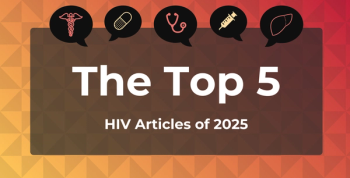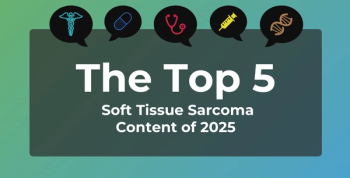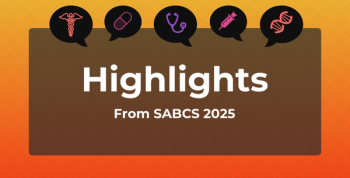
Updated mRNA Vaccines Against JN.1 Show Strong Safety Signal in Real-World Data
Key Takeaways
- The Danish cohort study found no significant increase in serious adverse events following JN.1-containing mRNA COVID-19 vaccines, reinforcing their safety profile.
- Key findings include reduced risks for ischemic cardiac events, cerebrovascular events, and pulmonary embolism, with no increased risk for myocarditis.
A nationwide Danish cohort study demonstrated no increased risk of serious adverse events following vaccination with JN.1-updated mRNA COVID-19 vaccines, reinforcing their safety profile and supporting continued use in high-risk populations amid ongoing viral evolution.
The emergence of the SARS-CoV-2 Omicron JN.1 lineage, classified as part of the KP.2 subvariant family, prompted urgent regulatory and public health responses to ensure continued protection against evolving
This population-based study provides critical insights for clinicians, policy makers, and payers tasked with navigating vaccination strategies amid ongoing viral evolution and persistent vaccine hesitancy. By assessing safety outcomes in a large, at-risk population under real-world conditions, the findings can help to contextualize benefit-risk assessments and inform future immunization campaigns.
Study Design and Cohort Characteristics
This retrospective cohort study leveraged Denmark’s national health data infrastructure, linking records from the Danish Civil Registration System, Danish Vaccination Register, and the National Patient Register to monitor vaccine safety. The study population included all adults 18 years and older who met government criteria for receiving a JN.1-containing booster—specifically individuals 65 years and older or those categorized as high-risk due to comorbidities. To be eligible, participants were also required to have received at least 3 prior COVID-19 vaccine doses before the study start on May 1, 2024.
Of the 1,585,883 eligible adults, 1,012,400 received the updated JN.1 vaccine during the follow-up period ending March 31, 2025. The mean age of vaccinated individuals was 73.5 years, and the cohort was slightly more female (54.4%) than male. The majority (86.7%) were prioritized due to age rather than underlying high-risk conditions. Common comorbidities included chronic cardiac disorders (20.3% of vaccinated individuals), autoimmune conditions (8.5%), diabetes (6.4%), and malignancy (9.9%).
Outcomes and Statistical Methodology
The investigators focused on 29 predefined serious AEs of special interest (AESIs), compiled from sources including the Brighton Collaboration and FDA's Biologics Effectiveness and Safety Initiative. These AESIs included cardiovascular conditions (eg, ischemic cardiac events, myocarditis), thrombotic events (eg, pulmonary embolism, deep vein thrombosis), neurological syndromes (eg, Guillain-Barré syndrome, seizures), autoimmune and inflammatory conditions (eg, type 1 diabetes, uveitis), and organ-specific failures (eg, acute liver failure, acute kidney injury).
Vaccination status was treated as a time-varying covariate. Each individual contributed person-time to both the “risk period” (the 28 days post vaccination) and “reference period” (person-time outside the 28-day window, beginning either at study start or ≥43 days after any vaccine dose). A 14-day buffer period (days 29-42) was excluded from analysis to mitigate time-related confounding.2
Outcomes were measured as the first recorded hospital contact for each AE. Poisson regression models were used to estimate adjusted incidence rate ratios (IRRs) comparing risk and reference periods. Models were adjusted for sex, age, region, vaccination priority status, calendar time, and number of comorbidities. Statistical significance was defined as a 95% CI not overlapping 1.
Key Study Findings
The central conclusion of the study is that no statistically significant increases in AE rates were observed in the 28 days following vaccination with the JN.1-containing mRNA vaccines. In fact, several IRRs suggested lower event rates during the risk period relative to the reference period, though causality should not be inferred from these associations, according to the study authors.
Notable results include the following:
- Ischemic cardiac events: IRR of 0.84 (95% CI, 0.76-0.94), suggesting a modest reduction in risk
- Cerebrovascular events: IRR of 0.84 (95% CI, 0.77-0.92), including a similar trend for transient ischemic attacks and infarctions
- Pulmonary embolism: IRR of 0.75 (95% CI, 0.62-0.90)
- Acute kidney injury: IRR of 0.67 (95% CI, 0.59-0.77)
- Myocarditis: IRR of 1.12 (95% CI, 0.41-3.10), not statistically significant, indicating no detectable increased risk
- Pericarditis: IRR of 0.42 (95% CI, 0.20-0.89), with fewer observed cases post-vaccination
Only a few outcomes, such as erythema multiforme and subacute thyroiditis, yielded wide CIs due to very low event counts, resulting in limited statistical precision. For 3 outcomes—cerebral venous thrombosis, transverse myelitis, and narcolepsy—no events occurred in the risk period, precluding estimation of IRRs. Importantly, the upper bounds of the CIs for 19 of the 29 AEs were inconsistent with even moderate (≥1.5-fold) increases in risk, reinforcing the conclusion that large safety signals are unlikely.
Contextualizing the Findings
These results build upon prior evaluations of earlier Omicron-adapted vaccines, including those targeting the BA.1, BA.4/5, and XBB.1.5 lineages, which similarly demonstrated no elevated risks for serious AEs. The JN.1 lineage, which rose to dominance globally in late 2024, shares spike protein mutations associated with immune escape, raising concerns about the need for vaccine updates. This study offers reassurance that updating vaccine composition to address antigenic drift has not compromised the safety profile of mRNA platforms.
From a managed care and public health perspective, these findings are crucial. As vaccination fatigue and hesitancy continue to impact booster uptake, particularly among older and high-risk populations, robust safety data remain vital to maintaining trust in public immunization programs. In Denmark, the timely rollout of updated boosters was guided by transparent national registry infrastructure and comprehensive eligibility criteria, enabling efficient pharmacovigilance and coverage estimation.
Recent preclinical research by Ao et al further supports the rationale for JN.1-specific updates, demonstrating that a JN.1-mRNA vaccine elicited robust, long-lasting humoral and cellular immune responses in animal models, with enhanced neutralizing activity against JN.1 and KP.3 variants. These findings highlight the adaptability of mRNA platforms and underscore the importance of timely reformulation to match emerging SARS-CoV-2 subvariants.3
Study Limitations
Andersson et al acknowledge several important limitations that may affect the interpretation of findings.2 First, residual confounding remains a concern despite the use of within-individual comparisons to mitigate bias. Unmeasured factors, such as differences in health care–seeking behavior or temporal shifts in baseline health status, may still influence outcomes. Second, the study was underpowered to assess the safety of very rare events. For adverse outcomes such as transverse myelitis or Guillain-Barré syndrome, the low number of cases limited the statistical precision and precluded definitive risk estimation. Third, the relatively short follow-up period of 28 days after vaccination may not capture AEs with longer latency periods or delayed clinical onset. Finally, because the study population was restricted to adults eligible for Denmark’s national JN.1 booster program—primarily older individuals and those at high risk—the findings may not be generalizable to younger, healthier populations or those in different health care settings.
Conclusion
In the context of ongoing SARS-CoV-2 evolution and the need for variant-specific immunization strategies, this large-scale, real-world analysis offers timely and clinically meaningful reassurance about the safety of JN.1-updated mRNA COVID-19 vaccines. The absence of increased risk for any of the 29 serious AEs evaluated—including myocarditis, ischemic cardiac events, and thromboembolic conditions—reinforces the favorable safety profile of mRNA technology, even as antigenic targets evolve. These findings hold particular relevance for managed care organizations, public health authorities, and policymakers who must weigh the risks and benefits of updated booster campaigns amid growing public skepticism and pandemic fatigue.
REFERENCES
- Ma KC, Castro J, Lambrou AS, et al. Genomic surveillance for SARS-CoV-2 variants: Circulation of omicron XBB and JN.1 lineages - United States, May 2023-September 2024. MMWR Morb Mortal Wkly Rep. 2024;73(42):938-945. doi:10.15585/mmwr.mm7342a1
- Andersson NW, Thiesson EM, Hviid A. Safety of JN.1-updated mRNA COVID-19 vaccines. JAMA Netw Open. 2025;8(7):e2523557. doi:10.1001/jamanetworkopen.2025.23557
- Ao D, Peng D, He C, et al. A promising mRNA vaccine derived from the JN.1 spike protein confers protective immunity against multiple emerged omicron variants. Mol Biomed. 2025;6(1):13. doi:10.1186/s43556-025-00258-7
Newsletter
Stay ahead of policy, cost, and value—subscribe to AJMC for expert insights at the intersection of clinical care and health economics.








